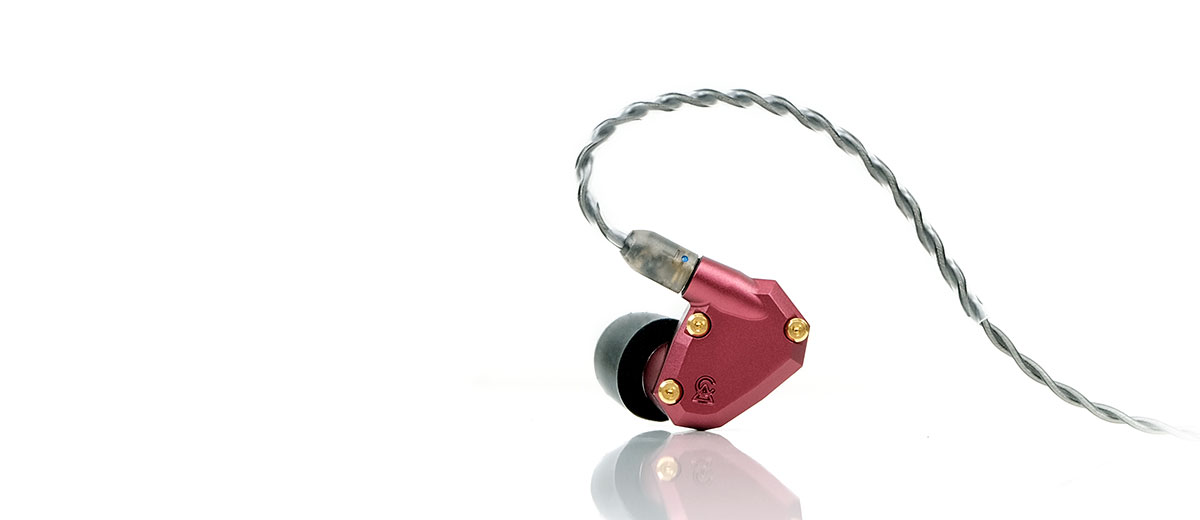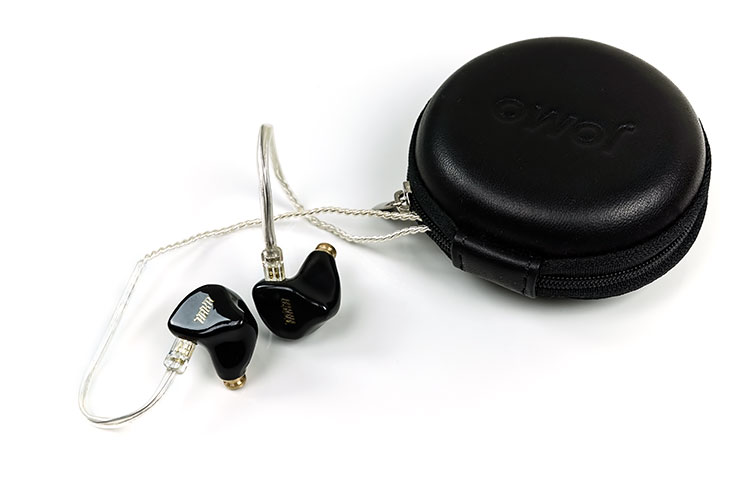Sound Impressions
Presentation
Campfire Audio has done something quite different with the IO compared to the Comet and Polaris 2 which are the next units below and above. I suspect how you interpret its performance will focus on exactly where your preferred vocal and instrumental pitches focus on its frequency curve.
The reason for that statement is due to a fairly strong 1-2k emphasis in the IO tuning combined with a relatively tight low-end, a smallish bump in the upper mids to lower treble transition from 4-5k, and an extended level of sparkle from 7-10k.
Anything that falls into that 1-2k range not only sounds central and focused but also has plenty of contrasting overtones pushing down from the upper treble energy and up from the mid-bass. How much sibilance or hard edging on the attack or how much warmth and wetness is relevant to
The interesting thing is that any instrument that pitches lower will sound a little on the warmer side because of the slight mid-bass elevation in the IO tuning. It is not a huge bump, it is more on the tasteful side and its sub-bass presence is also more on the moderate side.
Overall, the IO has a certain high-fidelity quality to its tuning with a lightish, quick-paced, and very clean tone up top and warmer smoother quality lower down. The mix does seem to suit more discerning audiophile recordings than out-and-out rock or pop.
Preferences
With these two distinct overtones and the mids tuning, I can understand why there have been so many contrasting opinions on the IO to date. So, how much you endear yourself to the IO tuning will ultimately depend on where in the FR your preferred genres like to focus on or what specific instruments dominate the mix.
For example, I love the precise and clean timbre the IO combined with Cayin’s N6ii delivers on Jeff Goldblum & The Mildred Snizter Orchestra’s debut album, especially for trumpet leads which can reach up to that 1k rise. The percussion is also clean and precise with very little splashiness in its overtone.
Jazz and lounge room recordings seem particularly suited to the IO’s strengths. I could listen to this style or this particular type of recording on the IO for ages without fatigue.
On the other hand, the breathy rap style of Theophilus London on his Last Name London recording replete with a busy background of echoey female vocal loops sounded messy and uneven and for me unsuited to what the IO excels at.
Staging
One thing that is noticeable is the staging capability of the IO. I like the airy extension which the T.E.A.C tech always does so well on. Depth is ok actually, better than you might think, just lacking a little bit of power and weight.
The low-end details and extension are very good just don’t expect dynamic driver levels of rumble. As a result, instruments might lack a little authority but will not be found wanting for detail and precision.
The width is very good also with some nice imaging. Actually, the IO sounds pretty spacious to my ears using the Sony 1Z and Hifiman’s R2R2000 which I preferred a bit more than my usual reference Lotoo PAW Gold Touch.
I think it’s Sony’s stronger low-end and Hifiman’s superb natural tones of the R2R2000 series that add a bit more meat to the IO timbre and will broaden its genre flexibility nicely.
Synergy
Efficiency
The IO is rated at 26Ω and 109dB SPL which places it just a tier below the super-sensitive monitors that Campfire Audio has such as the Andromeda and Solaris.
Having said that the likes of the entry-level single BA of the Comet are less efficient and do require more current. Competing BA IEMs such as qdc’s Neptune and the Haka vary with the Neptune being marginally less efficient and Haka a bit more efficient.
The bottom line is that the IO is fairly easy to drive, even in low-gain with most moderate sources and even some good smartphones but inefficient enough to avoid picking up background hiss on higher noise floors such as the M11. This is a fairly well-behaved monitor for hiss detection.
Pairings
Pairings are much more important with the IO than finding a suitable powered source or portable amp. The unique tuning of the IO does require something with a bit of warmth to balance out the mid-to-treble energy and retain a decent body below 1k.
Of course, preferences are wide and varied so if you like a bit of brightness to your tuning and a crisp percussion delivery then DAPs such as the M11 will give you that plus a fairly airy top-end to go with it.
You can go higher-end also with the Lotoo PAW Gold Touch for some excellent clarity, and dynamic range but again that upper mids and percussion timbre sizzled a bit too much for my liking.
My personal preference went with the HiBy R5 with the IO along with the Cayin N6ii and Hifiman’s R2R2000 Red at the higher end of the scale.
All 3 DAPs added a little more body than the FiiO M11 and in the case of the R5 a bit more of a satisfactory low-end kick. The N6ii brought some additional wetness and warmth to the mids and vocal range along with the R2R2000 Red.
The Red was perhaps the best match for the IO out of all the DAPs used along with the foam tips. The R5 and N6ii will relax the top end a little to get that smoother tone but the R2R2000 Red was airier and just as rich and smooth as the other two.
The foam tips will help to fatten up the sound and lose the “tiss” from the percussion timbre as well as tease out some excellent vocal weight and balance.
Select Comparisons
Campfire Audio Comet
$199
Technical
Priced to be their entry-level monitor, the Comet is a single balanced armature driver IEM whereas the IO is a dual BA design. We reviewed the Comet back in mid-2018 and were so impressed we gave it a Bang For Buck award end of the year.
The Comet has quite a different look design-wise to the IO not to mention a radically different tuning. The aesthetic is pulled from their TOTL Atlas single dynamic driver design but shrunk down considerably.
This is a very shiny drop-forged stainless steel CNC machined 3-piece construction with a channel-agnostic fitting. That means there is no left or right on the drivers, rather the cable will determine left or right.
This is a bullet-type fitting meaning the majority of the seal is in the tip with the Comet, much more so than the IO. Virtually none of the Comet’s main body should be touching your ear whereas more of the IO is resting on your ear.
To be honest I find the IO the steadier fit but the seal on both is more or less the same. It will come down to the tips you wish to use.
The cable on the IO is a slight upgrade on the Comet’s 1.2m black twisted copper Litz which was snatched from the Polaris MK1. The IO uses the Polaris MK2 4-core SPC Litz wire.
Both handle quite well and the Comet does have the additional mic and inline control module. However, the audible performance of the IO cable is better. It also looks nicer.
Performance
The Comet is rated at 48Ω and 97dB SPL which is fairly inefficient compared to the IO’s 26Ω and 109dB SPL. On paper, the Comet will be the harder monitor to drive requiring more current and hence more volume.
In our real-world testing with the HiBy R5, Lotoo PAW Gold Touch, and Hifiman R2R2000 Red Edition this assertion rang true with the IO proving to be the much easier of the two to drive.
Both perform quite well with DAPs with higher noise floors though the less efficient Comet will have a slight edge with the likes of the FiiO M11 in terms of a pitch-black background.
With the volume at zero, there was just a very faint hint of noise with the IO but it was so low it was negligible once the music kicked in.
Tuning
Very different tunings so these are not overlapping creations despite their close price points. The Comet sounds the slightly darker of the two with a warmer more extended low-end presence.
The instrumental timbre has a bit more body and richness to it but also it has a fairly strong dip into the lower treble preferring instead to peak with sparkle at 8-10k.
The IO has a bit more of a focus on mid-bass warmth and a slightly greater roll-off on the low end compared to the Comet. It also has a more mid focus and presence, particularly around 1-2k.
Any instruments that straddle this along with vocals will be front and center and dominate the presentation. The Comet is a bit more relaxed and neutral in positioning by comparison.
The IO treble tuning is more forward and with less of a lower treble dip compared to the Comet. It also has less of a peak at 8-10k so it’s slightly relaxed at the very top-end. As a result, you get a little more crispness to the percussion, more detail, and a mid-performance with more “pop”.
This tuning creates a slightly stretched but articulate soundstage with good air and headroom but not as powerful or as deep as the Comet low-end. The Comet’s more netural midrange and emphasized low-end and upper treble also create a perception of a larger soundstage.
qdc Neptune
$198
Technical
The qdc Neptune is a single full-range balanced armature universal IEM priced at $198 and an entry-level monitor. We reviewed it early in 2018 and came away very impressed with its vocal to treble-centric tuning.
Like the Haka, (see below), qdc has taken their custom design experience and created quite a comfortable custom universal acrylic design. It is marginally bigger than the IO but much lighter and with an aggressive contouring that fits very comfortably in the ear.
The IO feels a bit more rigid and heavy in the ear with its stronger aluminum design but it seals just as well with that long nozzle and slightly better selection of tips.
A big difference is the cables they both use. The Neptune uses reverse polarity protruding 2-pin connectors making it a pain to roll cables with regular 2-pin connectors. The IO uses a universal MMCX design with excellent beryllium connectors so much easier to roll or upgrade the cable.
The supplied cable with the Neptune is a 4-core OFC in PET braided wrap and whilst light and noise-free it is not as strong as a performer sonically as CA’s 4-core SPC Litz wire.
Performance
The qdc Neptune is rated at 10Ω and 104dB SPL compared to the IO’s 26Ω and 109dB so on paper the Neptune is just as easy to drive if not easier but does need a bit more current for volume than the IO.
In our real-world testing with the FiiO M11 and the Cayin N6ii, we found the IO to be marginally louder at equal volume points but otherwise, both had no issues being driven unbalanced and in low-gain from these two sources.
Neither will give you any issues with noise or background hiss on these two DAPs and remain fairly quiet with sparse tracks where black backgrounds are required.
Tuning
There are some similarities in the tuning of these but only at a very high level. Both have a bit of mid-bass warmth but otherwise, a bit bass light with some sub-bass roll-off so neither are the deepest or most powerful sounding monitors.
Both have a fairly amplified and mid-centric focus with the IO bumping heavy at 1-2k and the Neptune prolonging its bump from 1 to 3k so just a bit further up the FR but perhaps not as strong or narrow. Treble is where they differ the most.
The Neptune is a little more relaxed sounding in its treble tuning though by no means a relaxed tuning in its own right. Rather it is not as forward or contrasting sounding as the IO.
Timbre has a slightly warmer softer tone on the Neptune whereas the IO is the cleaner and leaner of the two with more percussion presence and more partial odd-harmonic overtones on its timbre.
You will pick up imaging cues and HF note articulation far quicker on the IO because your attention is drawn more to that energetic treble presence whereas the Neptune seems to keep it fixed a bit more on lower-mids up to 2k.
Jomo Audio Haka
SG$499
Technical
The Haka is a single-balanced armature universal monitor with a proprietary driver design using no crossover technology. Unlike the IO, the Haka uses a custom universal acrylic build with a brass nozzle which makes it lighter and a more comfortable fit in the ear.
However, the acrylic build makes it slightly less durable than the aluminum alloy shell of the IO and the all-black finish is a little understated compared to the Garnett theme of the IO.
The supplied cable from Jomo for the Haka is a 2-pin 1.2m SPC 4-core wire wrapped in a PET jacket which, for me, is a step down from the Campfire Audio IO’s MMCX 4-core SPC Litz wire. Both are low for microphonics and fairly tangle-free but the IO cable handles just that bit better.
Performance
The Haka is rated at 18Ω and 107dB SPL compared to the IO’s 26Ω and 109dB so on paper it should be the slightly less efficient monitor for current or volume but otherwise, the slightly easier monitor to drive.
In our testing with the FiiO M11 and HiBy R5 that pretty much was confirmed with the Haka volume levels a bit higher than the IO using both DAPs’ low gain unbalanced outputs.
The Haka’s lower efficiency is also pretty good for blocking out any potential hiss from the M11’s output, maybe even more so than the IO but in all honesty neither presents any hiss issues.
Tuning
Like the Comet, the Haka is the darker of the two tunings with a stronger full-bodied low-end and more sub-bass extensions and presence. Like the IO, the Haka has a midrange bump around 1-2k but it is not as significantly forward and is preceded by a fairly substantial drop into the treble with only a minor bump at 10k.
As a result, the Haka instrumental and vocal timbre is very even-harmonic dominant which means rich, smooth, and full-bodied but rather lacking in bite and air. The treble is articulate but much more relaxed sounding so percussion presence is second best to vocals which in turn pay deference to the stronger sub-to-midbass performance.
The IO is almost the complete opposite with a slight sub-bass roll-off and more mid-bass warmth. It is punchier but not as powerful on the low-end with a much greater focus on the 1-2k midrange bump and a more forward treble presence.
The IO is cleaner sounding, with a more balanced to slightly odd-harmonic dominant or sharper instrumental and vocal timbre. Percussion has less body but more presence and a bit more bite and clarity. It’s airier, taller sounding than the Haka but not as deep for staging.
Our Verdict
In some ways, the IO reminds me of the Atlas. Not that they have a similar tuning but rather the bold focus by Campfire Audio on developing a tuning that goes in a very specific direction rather than generalizing to the masses.
Developing a line of IEMs from entry to flagship that sounds very different from each other is probably harder than we would imagine.
The temptation to just simply cobble together a more resolving sound than the last one with additional drivers tends to propagate heavily in the ChiFi world so kudos to CA for experimenting with sound and taking risks.
And the IO is a risk. It will not appeal to everyone, it does not follow the Harman Target, hence my reference to the niche. However, what it does do it does very well indeed, and paired with a nice set of foams, a warmish DAP like the N6ii, and some quality jazz I found the tuning to be ideally suited and more than a relaxing listening experience.
If that sounds like your bag or your listening preference then I do recommend you give it a demo and see what you think of it for yourself.
Campfire Audio IO Specifications
5Hz–22kHz Frequency Response
109 dB SPL/mW Sensitivity @ 1k
26 Ohms @ 1kHz Impedance






